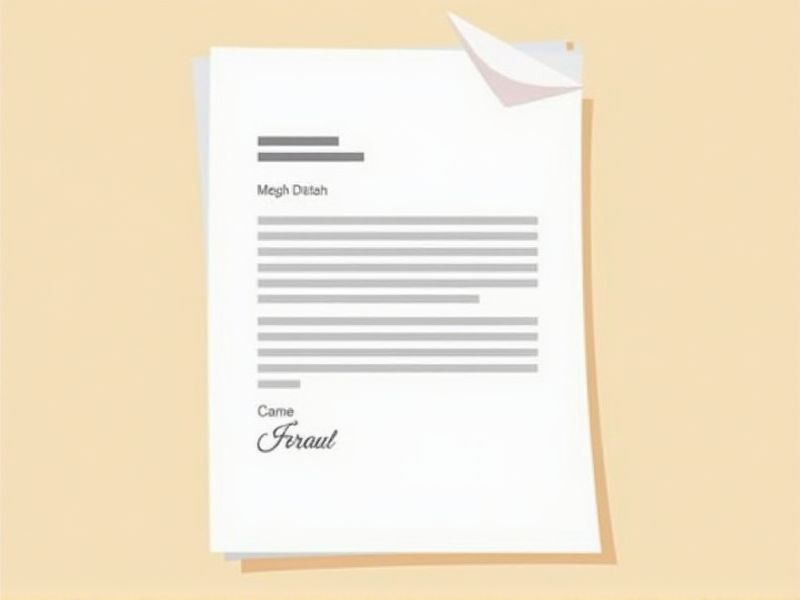
When writing a formal letter in the UK, it is essential to follow a clear and polite structure to ensure your message is understood and taken seriously. A formal letter typically includes your address, the recipient's address, the date, a proper salutation, the body of the letter, and a formal closing. Using formal language and avoiding contractions or slang helps maintain a respectful tone throughout. Pay attention to alignment and spacing, as these details contribute to the letter's professional appearance. For your convenience, this article offers a variety of formal letter templates to suit different occasions.
Samples of letter format formal uk
Formal Letter Format Template Uk
Business Letter Format Uk Guidelines
Professional Letter Format Examples Uk
Uk Formal Letter Structure And Style
Formal Letter Writing Format Uk
Official Letter Format Uk Standards
Formal Letter Format For Job Applications Uk
Formal Letter Layout Uk Specifications
Uk Formal Correspondence Letter Format
Formal Letter Format For Complaints Uk
Standard Business Letter Format Uk
Uk Formal Letter Writing Rules
Formal Letter Format For Inquiries Uk
Uk Job Offer Letter Format Guidelines
Formal Letter Format For Resignations Uk
Formal Letter Format For Requests Uk
Formal Letter Examples For Various Situations Uk
Uk Formal Letter Presentation Style
Proper Letter Format For Uk Business Communication
Formal Letter Format For Academic Purposes Uk
Important Things to Know when Writing Letter Format Formal Uk
Use Of Sender’S Address And Date At The Top Right
In a formal UK letter format, it's essential to place the sender's address and the date in the top right corner of the page. The sender's address should be written without a name, typically including the street address, town or city, and postcode. Following that, the date should be written in full, such as "23 October 2023" for clarity and professionalism. This format establishes your credentials and sets the tone for the correspondence, making it easier for the recipient to identify you and reference the letter later.
Recipient’S Address On The Left, Below Sender’S Address
In formal UK letter format, the recipient's address is positioned on the left side of the page, appearing just below the sender's address. This layout provides clear organization and ensures that the letter appears professional. Typically, the recipient's address includes the name, street address, city, and postcode to facilitate efficient delivery. Ensuring this format is followed enhances the letter's readability and reflects attention to detail in business or formal correspondence.
Formal Salutation (E.G., Dear Mr/Ms [Surname])
In formal UK letter writing, the salutation sets the tone for the entire correspondence. Use "Dear Mr." or "Dear Ms." followed by the recipient's surname to convey respect and professionalism. If you're unsure of the recipient's gender, "Dear [Full Name]" is an appropriate alternative. A well-crafted salutation ensures that your message is received positively and establishes a formal relationship.
Clear, Concise Paragraphs With Professional Tone
A formal letter in the UK should consist of clear and concise paragraphs, each focusing on a single idea or topic. Use a professional tone throughout, ensuring that language remains respectful and direct. Begin with a proper salutation and end with an appropriate closing line, maintaining the formal structure. Your attention to detail in formatting and content will enhance the letter's effectiveness and convey your message more powerfully.
Formal Closing (E.G., Yours Sincerely Or Yours Faithfully) With Signature Below
In a formal letter format commonly used in the UK, the closing is a critical element that conveys respect and professionalism. The choice of closure depends on the salutation you used; "Yours sincerely" is appropriate when you know the recipient's name, while "Yours faithfully" is used when you addressed them with a generic greeting like "Dear Sir/Madam." Following the chosen closing, your signature should be placed below, ensuring that your name is signed in ink if sending a hard copy. This format not only enhances the letter's credibility but also reflects your attention to detail and understanding of formal communication standards.
